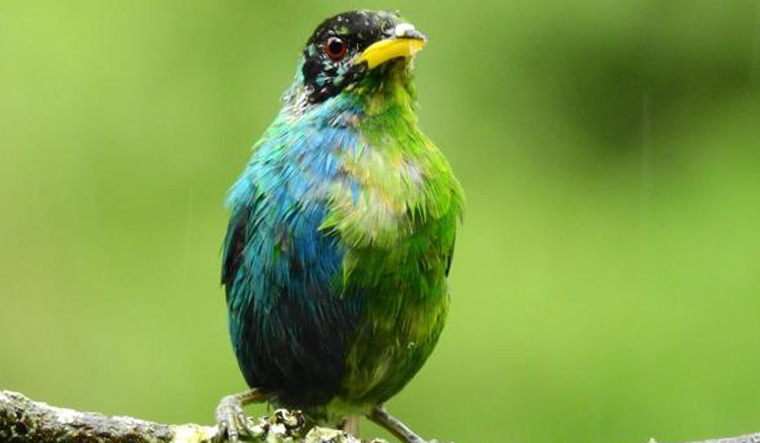In a thrilling encounter, Sesquicentennial Distinguished Professor Hamish Spencer, a renowned zoologist from the University of Otago, had the privilege of spotting an astonishing half-female, half-male bird while holidaying in Colombia. This captivating avian creature, a wild Green Honeycreeper, exhibited an exquisite plumage, with one half adorned in vibrant green, symbolizing the female, and the other half adorned in striking blue, representing the male.
The rarity of this discovery cannot be overstated, as bilateral gynandromorphs are an exceptionally uncommon occurrence in the avian world. Professor Spencer, who has dedicated his life to studying birds, revealed that this unique phenomenon has never been documented in any bird species found in New Zealand. "Many birdwatchers could go their whole lives without ever catching a glimpse of a bilateral gynandromorph. It is an extraordinary sight, and I consider myself truly privileged to have witnessed it," Professor Spencer shared.
To further accentuate the significance of this find, photographs of the bird have been hailed as the finest examples of a wild bilateral gynandromorphic bird ever captured. These images will undoubtedly contribute to the scientific understanding of this exceptional occurrence. This extraordinary half-female, half-male bird serves as a testament to the intricate and awe-inspiring complexities of nature, reminding us that there is still so much left to discover and understand.
The discovery has prompted the publication of a report in the prestigious Journal of Field Ornithology, making it only the second recorded instance of gynandromorphism in the Green Honeycreeper species in over a century. Professor Spencer emphasized the importance of gynandromorphs in unraveling the mysteries of sex determination and sexual behavior among birds. While this phenomenon is more commonly observed in animal species that exhibit strong sexual dimorphism, such as certain insects, crustaceans, spiders, lizards, and rodents, the bilateral gynandromorph observed in this Green Honeycreeper showcases that either side of the bird can manifest as male or female, as seen in several other species.
Delving into the science behind this extraordinary occurrence, Professor Spencer explained that bilateral gynandromorphs arise from an error during female cell division, resulting in the production of an egg. Following this, double-fertilization by two sperm takes place, creating this captivating combination of male and female characteristics within a single individual.
Eager to inspire others, Professor Spencer expressed his hope that this remarkable discovery would encourage people to appreciate and treasure the exceptionalities found in nature. He urged fellow enthusiasts to remain vigilant and be on the lookout for other extraordinary occurrences within the avian world, encouraging them to seek out the first documented example of a bilateral gynandromorph in a New Zealand bird.










